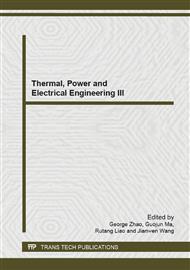p.322
p.327
p.332
p.337
p.341
p.349
p.353
p.358
p.366
Numerical Study on the Interaction Mechanism between Swirl and Reverse Flow Rate in a Twin Swirl Combustor
Abstract:
An isothermal flow in a Twin Swirl Combustor (TSC) was simulated with the Renormalized Group (RNG) k-ε turbulence model. The swirling and recirculation intensity was studied under different structures and inlet conditions. The results confirmed that there was a significant negative correlation between the trend lines of the swirl number (S) and reversed flow rate (Xr). The gradient of reversed flow rate was larger in the front and middle parts of the combustor than that of swirl number. The end-surface-inlet structure had a better swirl and recirculation enhancement effect. With the end-surface-inlet structure, the internal swirl and reverse intensity could be flexibly adjusted by switching the swirl intensity of the primary air. Under the structure of staggered-inlet, there was a critical distance between primary and secondary air inlets. When exceeded, it would be more difficult to enhance the swirl and reverse flow effect by increasing the swirl intensity of the secondary air.
Info:
Periodical:
Pages:
341-348
Citation:
Online since:
June 2014
Authors:
Keywords:
Price:
Сopyright:
© 2014 Trans Tech Publications Ltd. All Rights Reserved
Share:
Citation:


